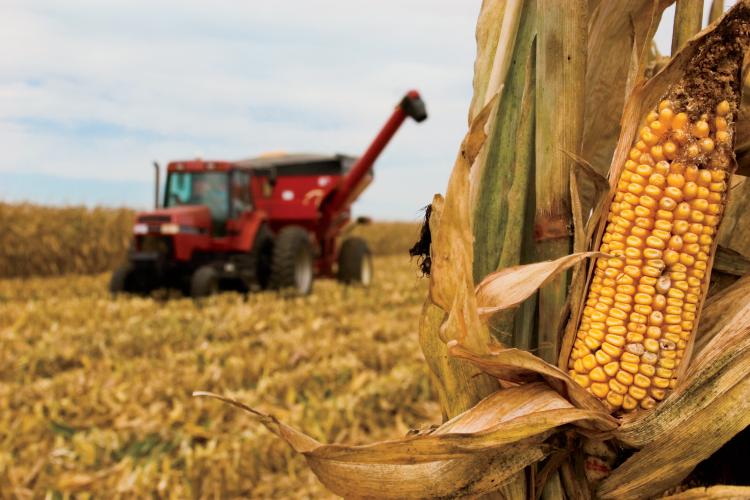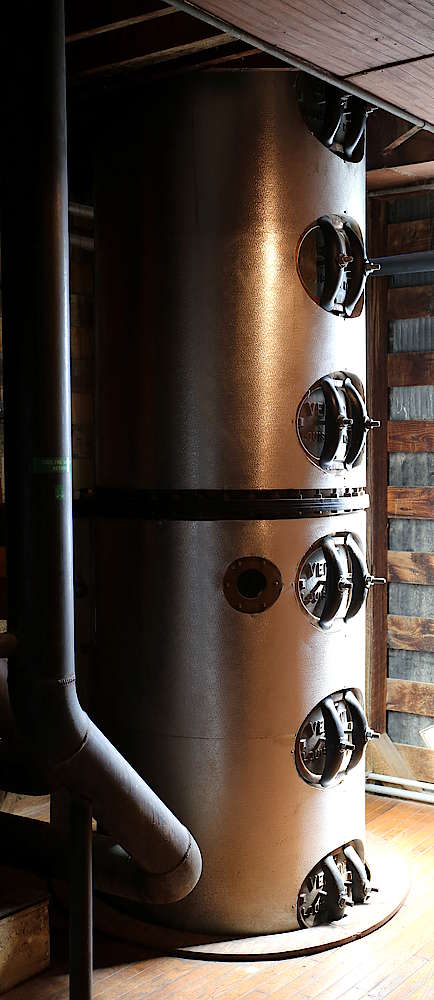American Whiskey as produced in the United States would typically be classified as a specific type, determined by the main ingredient used in the mash:
- Bourbon
- Corn whiskey
- Malt whiskey
- Rye whiskey
- Rye Malt whiskey
- Wheat whiskey
All the of these should be distilled to a maximum of 160 proof (or 80% Alcohol By Volume (ABV)), and it cannot be higher than 125 proof (62.5% ABV) when it is put to rest in casks. If casks are used (which is not a requirement for Corn whisky), they are typically only allowed to be first-use. Artificial coloring is not allowed, other than in blends.
Types of American Whiskey
Unlike Scotland, the United States does not dictate how long a whiskey should age. If it aged for at least 2 years, though, it can be called “Straight”.
Bourbon
Legally speaking The US and Canada reserved the term Bourbon for spirits made in the United States. Bourbon should be produced with a grain mixture that consists of at least 51% corn, and aged in first-use charred oak casks. There is no requirement as to how long Bourbon should be aged in the cask.
Once bottled, Bourbon should be at least 80 proof (or 40% ABV).
Popular brands of Bourbon include:
- Maker’s Mark
- Buffalo Trace
- Woodford Reserve
- Pappy Van Winkle’s Family Reserve
Creating Sour Mash follows the same processes as Bourbon, but uses a part of the previous mash to start the fermentation of the new batch (not unlike you would create sourdough bread using pre-fermented dough). As a result, the final product typically ends up tasting sweeter and richer. The best known Sour Mash is of course Jack Daniels.

Corn whiskey
Corn whiskey should be made from a mash that consists of at least 80% corn. As stated above, Corn whiskey does not have to be aged in casks. When casks are used, they should be uncharred, or previously used.
If the producer were to use charred casks, the final product would end up as a Bourbon, instead.
Examples of Corn Whiskey are:
- Mellow Corn
- Georgia Moon Corn Whiskey
Malt Whiskey
American Malt Whiskey must have at least 51% malted barley in the wash used. If a product is to be called Single Malt, it must use 100% malted barley for the wash, and typically follows the regulations used for Scotch (though of course American Single Malt originates in the US, rather than Scotland).
Like the other American whiskeys, charred first use casks are to be used. Because of this, even though the process is quite similar to the Scottish way of making whisky, American Single Malt whiskey is closer in taste to Bourbon.
Some examples of American Malt whiskey:
- Westland American Single Malt
- Balcones Texas Single Malt
- Woodford Reserve Straight Malt
Rye Whiskey
In order for a whiskey to be called Rye whisky, the mash should concist of 51% Rye. Typically this will be complemented with corn or malted barley.
Rye whiskey once was the dominant type of whiskey produced in the United States. The prohibition almost brought this production to an end, though at the start of the 21st century, more and more producers started making Rye whiskey again.
Compared to Bourbon, Rye whiskey tends to come across as a bit spicier, where Bourbon is much sweeter.
Examples of Rye Whiskey are:
- Bullit Rye
- Woodford Reserve Rye Whiskey
- Wild Turkey Kentucky Straight Rye Whiskey
Rye Malt Whiskey
Rye Malt is similar to Rye Whiskey, except this time malted rye is used.
Examples of Rye Malt whiskey are:
- Rogue Spirits Oregon Rye Malt Whiskey
- Old Maysville Club
Wheat whiskey
Wheat whiskey needs to contain at least 51% wheat in the mash, and like the other American whiskeys, should be aged in charred first use casks.
Examples of Wheat whisky are:
- Roughstock Montana Spring Wheat Whiskey
- Woodford Reserve Wheat Whiskey
- Dry Fly Straight Cask Strength Wheat Whiskey
Distillation of American Whiskey
The process of making American whiskey is very similar to the way Scottish whisky is made. The main legal difference is the casks, as they are obliged to be first-use. However, the distillation process is also quite different.
While Scottish distilleries typically use pot stills, American distilleries tend to use column stills. Rather than a big narrowing vessel like a pot still, column stills have multiple “chambers” inside them, and the distilled spirit travels from the lowest chamber up to the highest one.
The chambers are separated by perforated plates that let the alcohol through. Steam or heat is coming from the bottom, causing the evaporated spirit to travel higher and higher into the column, until they get fed into a cooling foil.
The advantage of column stills is that, unlike pot stills, they do not require cleaning after each batch. Instead, they can pretty much operate continuously.
Column stills also tend to produce a clearer and purer spirit as opposed to pot stills, though purists might try and argue that pot stills add more flavor.
Casks
As mentioned earlier, not all American whiskey has to be matured in casks. Those that do, though, depending on the type of whiskey, have different regulations apply to the casks.
Straight whiskey has to be aged for a minimum of 2 years in casks. Corn whiskey does not have to be aged in casks, but if casks are used, they should be previously used, and uncharred. Some of the other whiskeys, including Rye whiskey have the same requirements. However, Bourbon will need to be matured in charred containers.
Charring the casks will both imbue the spirit with sweeter flavors, as well as remove certain chemicals absorbed by the charred area.
The exception to the rules above is Tennessee whiskey, which has very tight regulations. Whiskey and Bourbon that wants to be classified as Tennessee whisky should adhere to the usual regulations, but as per the Lincoln County Process, it also has to be filtered through a layer of maple charcoal. There’s a notable exception in the law for the Benjamin Prichard distillery.
